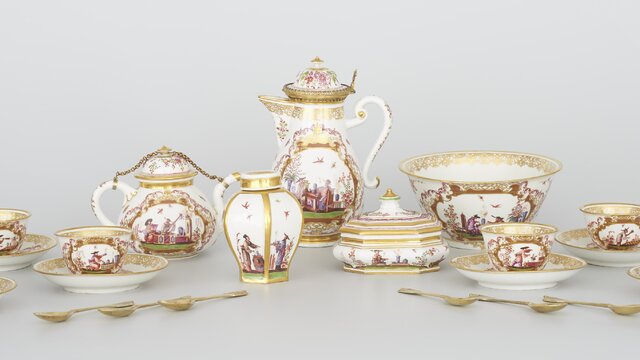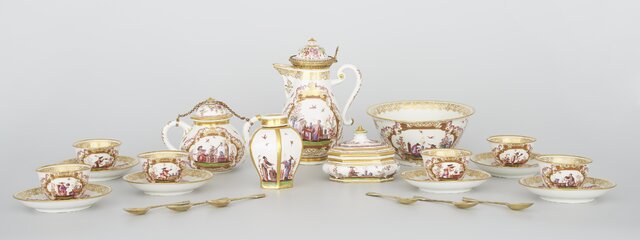A world of fragile masterpieces. The opening of the Porcelain Gallery at the Royal Castle in Warsaw
The history of the castle’s porcelain collection is a tale about the successful acquisition of unusual items and all the emotions associated with doing so. It is also a process of arduous verification of the state of preservation of these fragile objects, completing their services and searching for ones whose designs are particularly unique. The opening of the Porcelain Gallery at the Royal Castle in Warsaw is an event that crowns many years of effort to amass a rich and diverse collection comprising items that once adorned royal and magnate tables. Located in the majestic interiors of the castle, the gallery is a tribute to porcelain craftsmanship, whose beauty and precision have been the cause of great delight for centuries.
The opening of the Porcelain Gallery is also an opportunity to highlight the role of the royal porcelain collection as an important part of national culture and heritage. It is a place that takes us to the world of elegance and splendour of court life, delighting both art enthusiasts and all those interested in history and culture – says Prof. Wojciech Fałkowski, Director of the Royal Castle in Warsaw.
Complemented by examples of Far Eastern porcelain, the Porcelain Gallery displays the most valuable products of the Royal Porcelain Manufactory in Meissen, representing nearly half of the castle’s entire collection of Meissen items.
The porcelain masterpieces have been grouped thematically and chronologically. Juxtaposed together are thus the earliest examples of Böttger porcelain and stoneware, items from coffee and tea services decorated with chinoiserie scenes and Far Eastern Imari and Kakiemon style designs, as well as sets of various tableware items, including ones inspired by Far Eastern porcelain, for instance those “with red dragons” or “with a yellow lion”. Among them, visitors may also find some of the items of Meissen and Far Eastern porcelain from the collections of Augustus II.
The Meissen porcelain decorated with European motifs has been displayed separately. Items forming part of the services ordered by Augustus III are particularly valuable, some with the marks of the royal court confectionery: plates from the so-called coronation service, a platter and a cup with a saucer from the tableware intended for the Royal Castle in Warsaw, and dishes from the “green Watteau” service.
Displayed among them are also items from two of the most famous tableware sets: those once belonging to Count Aleksander Józef Sułkowski and the so-called Swan Service made for Count Henryk Brühl.
Other noteworthy items include a separately exhibited complete unique Meissen porcelain travel service decorated with chinoiserie in its original box from 1725-1730, as well as Japanese Imari porcelain from ca. 1700 – a pair of large vases with lids and a giant platter from the collection of Augustus II hung on the wall.
Visitors to the Porcelain Gallery may moreover admire the only set of 18 dishes decorated with motifs of fantastic animals (Fabeltiere) in Poland, introduced into the Meissen porcelain design by Adam Friedrich von Löwenfinck, one of the most prominent faience and porcelain painters in history. The Porcelain Gallery also displays other items associated with this outstanding artist, such as a set of 3 dishes decorated by Löwenfinck from 1735-1736 and 3 plates from Earl of Jersey’s second service from 1739-40.
Arrangement of the exhibition to a great extent refers to the original solutions of the 18th-century porcelain cabinets. The porcelain itself is displayed in five original Dutch cabinets-showcases from ca. 1750 as well as on French chests of drawers and a console table from the 1st half of the 18th century. The antique furniture not only displays the items, but also serves as gallery decoration, as do the plate and platter friezes hung on the walls and “supported” by consoles.
Many of the artefacts exhibited as part of the Porcelain Gallery are associated with the kings of Poland from the House of Wettin and either come from Augustus II’s collections or were commissioned by Augustus III. The items amassed in the castle reveal the secrets of the world of porcelain in its most precious and exclusive version – stresses Dr Anna Szkurłat, gallery curator.
The Porcelain Gallery is open from 26 April as part of the Royal Route.
Curator of the Porcelain Gallery: Dr Anna Szkurłat, Art Centre, Royal Castle in Warsaw




